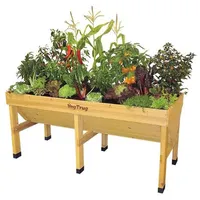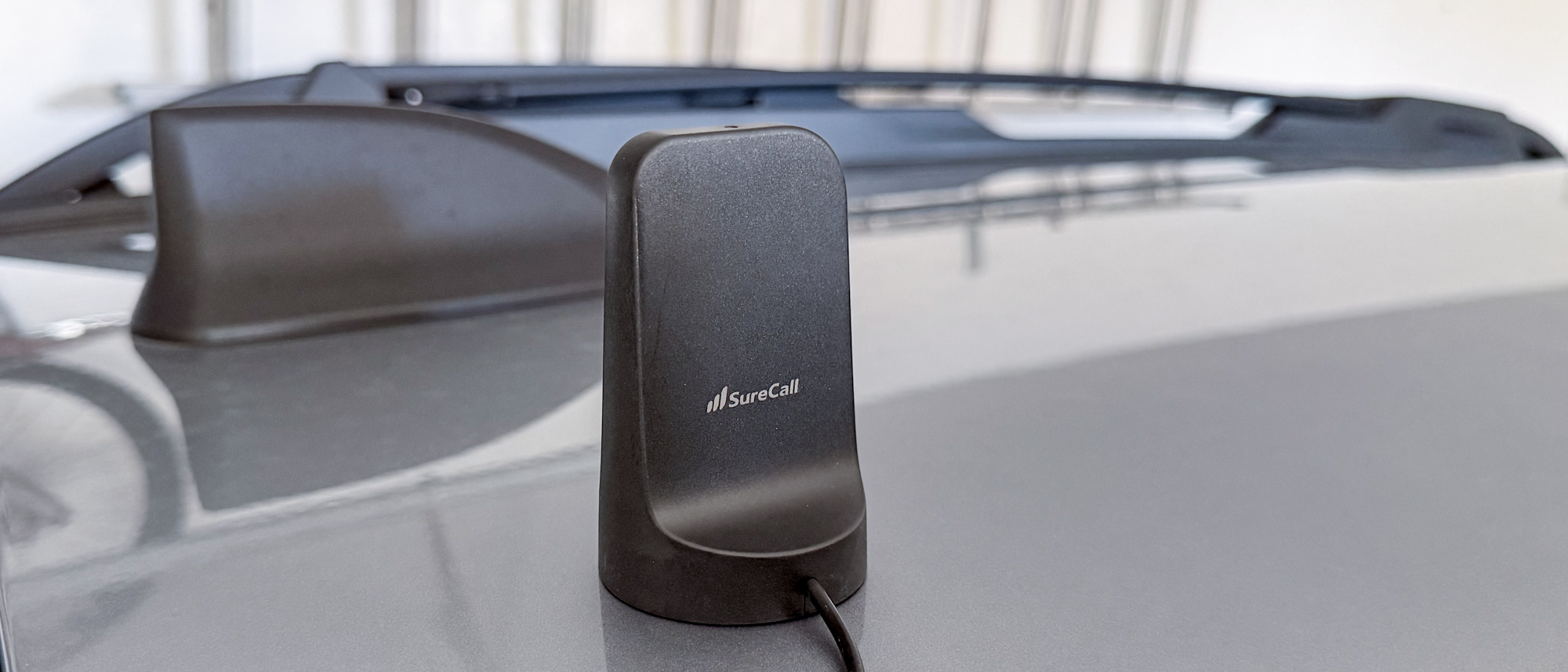7 vegetable seeds to sow in May for a homegrown harvest — according to gardeners
Get ready to grow your own vegetables this summer
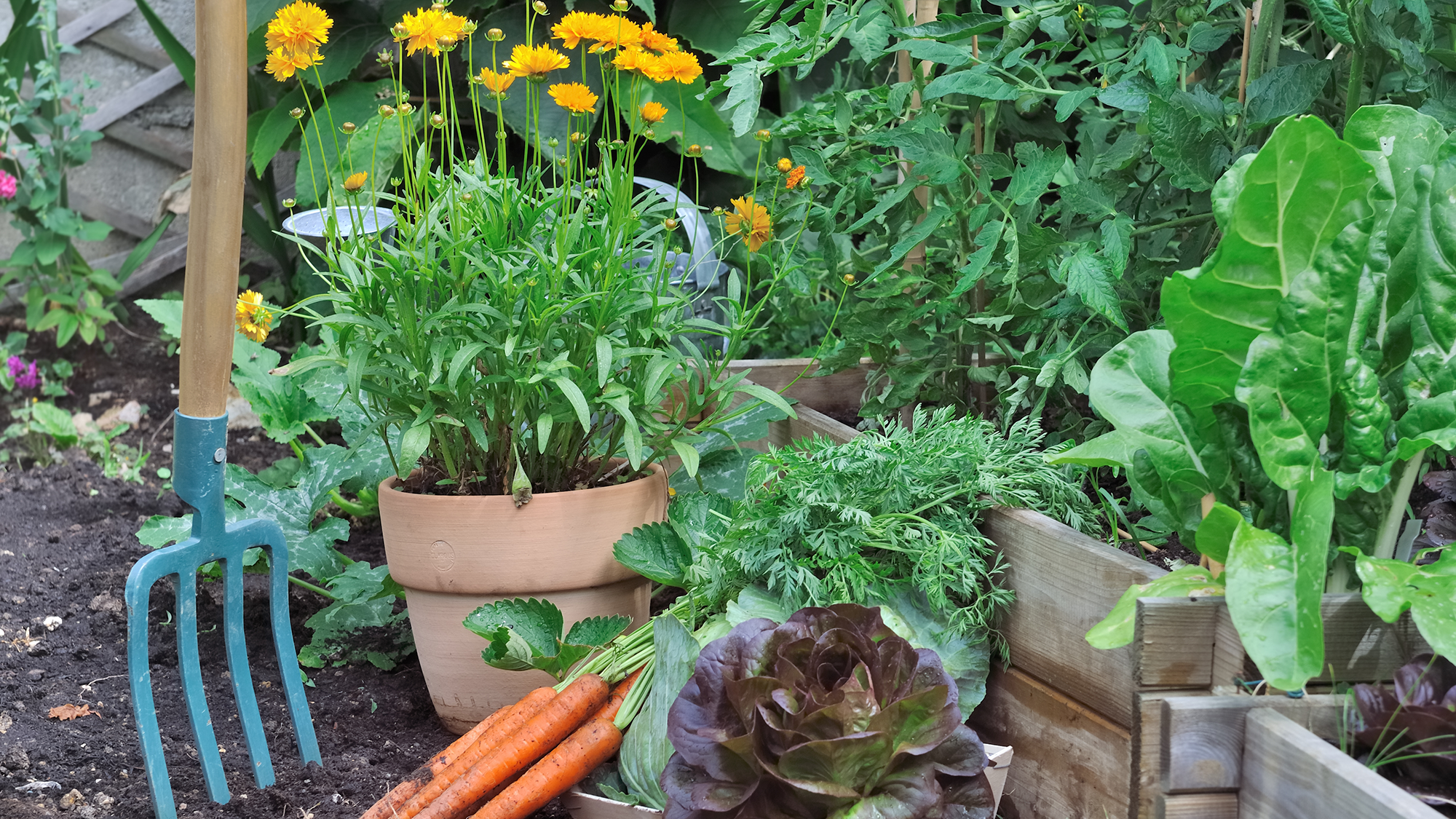
Whether you’ve got prize marrows in mind, or are happy with a misshapen tomato, we can all grow vegetables at home. And you don’t need a large backyard to get growing; a small plot or a balcony will do.
Nothing is more exciting than watching vegetables grow from seeds, develop into plants, and then harvesting your homegrown crop. What’s more, you can’t replace the flavor of freshly grown produce that comes straight out of your backyard.
With the last frosts now behind us, May is the ideal time to sow vegetables for a summer harvest. So, to inspire you, here are 7 vegetable seeds to sow in May for a homegrown crop. Now go grab your best gardening gloves and embrace growing your own.
Seeds versus plants
Gary Pilarchik, garden author and owner of the Rusted Garden, says one benefit of growing seeds over plants is the cost saving. “Buying garden transplants can easily cost $4 or $5 a plant. A pack of seeds is only about $2, and you get enough seeds for many seasons.”
I know this from personal experience growing zucchini for the first time last year. I kept the remaining seeds in the original packet and stored them inside my house, although Pilarchik advises keeping them in a Ziplock bag. I enjoy watching them sprout and grow indoors before I transplant them outside.
1. Carrots
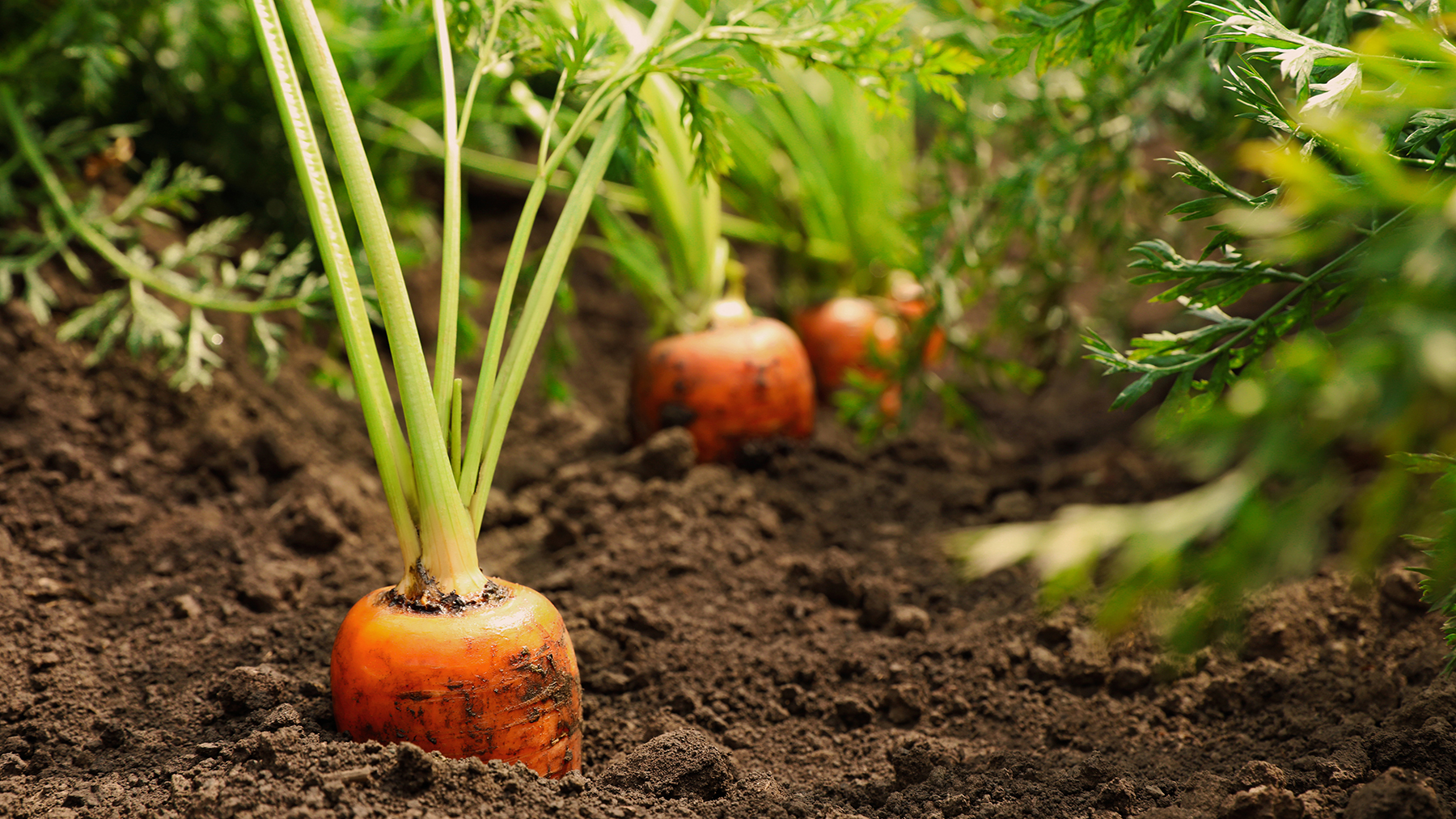
Apart from the experience of tasting freshly grown sweet carrots, I love seeing the attractive, bright-green, ferny foliage that takes center stage above the ground. And rather than discarding the carrot tops once you harvest your root veggies, Katie Pfeffer-Scanlan, at One Hungry Bunny, suggests adding them to pesto.
When growing carrots, Lindsey Hyland, owner of Urban Organic Yield, says that carrot seeds are best placed directly in the soil as they don’t like being transplanted. I like how this makes it easier for novice gardeners, as it misses out on a stage.
Get instant access to breaking news, the hottest reviews, great deals and helpful tips.
Carrots thrive in loose, well-drained soil that’s either sandy or loamy, and Hyland adds that it’s best if stones aren’t blocking their path.
The combination of a well-drained sandy soil, without the hindrance of stones, will allow the roots to penetrate. Heavier clay soils are also fine, as long as the soil is well-drained and is not compacted.
Joe Lamp at Joe Gardener recommends preparing the soil in advance, working in well-rotted shredded leaves and plenty of compost, discarding heavy stones. However, to make life easier, he suggests carrots can also be grown in raised beds or deep grow bags.
Carrots are best sown 0.25-0.5 inches deep in rows 12-18 inches apart. Then, once 3-4 true leaves appear, they can be thinned out. Hyland says, “It’s important to space out the seedlings once they start popping up, which ensures each carrot can grow fully without competing for resources.”
Carrots grow best when the temperature doesn’t exceed 75°F. High temperatures can reduce growth and cause a bitter flavor.
Thinning them out to 3 inches apart is a good guide. She also likes to mix a scoop of sand into their planting spots to improve the soil drainage.
Carrots also enjoy a good drink, and mulching around the plants will help retain soil moisture.
Ready to harvest
Because carrots are grown below the soil, it can be difficult to tell when they are ready to harvest. But as a guide, they will be ready about 60 to 80 days after planting, although this will depend on the variety you are growing.
2. Cucumbers
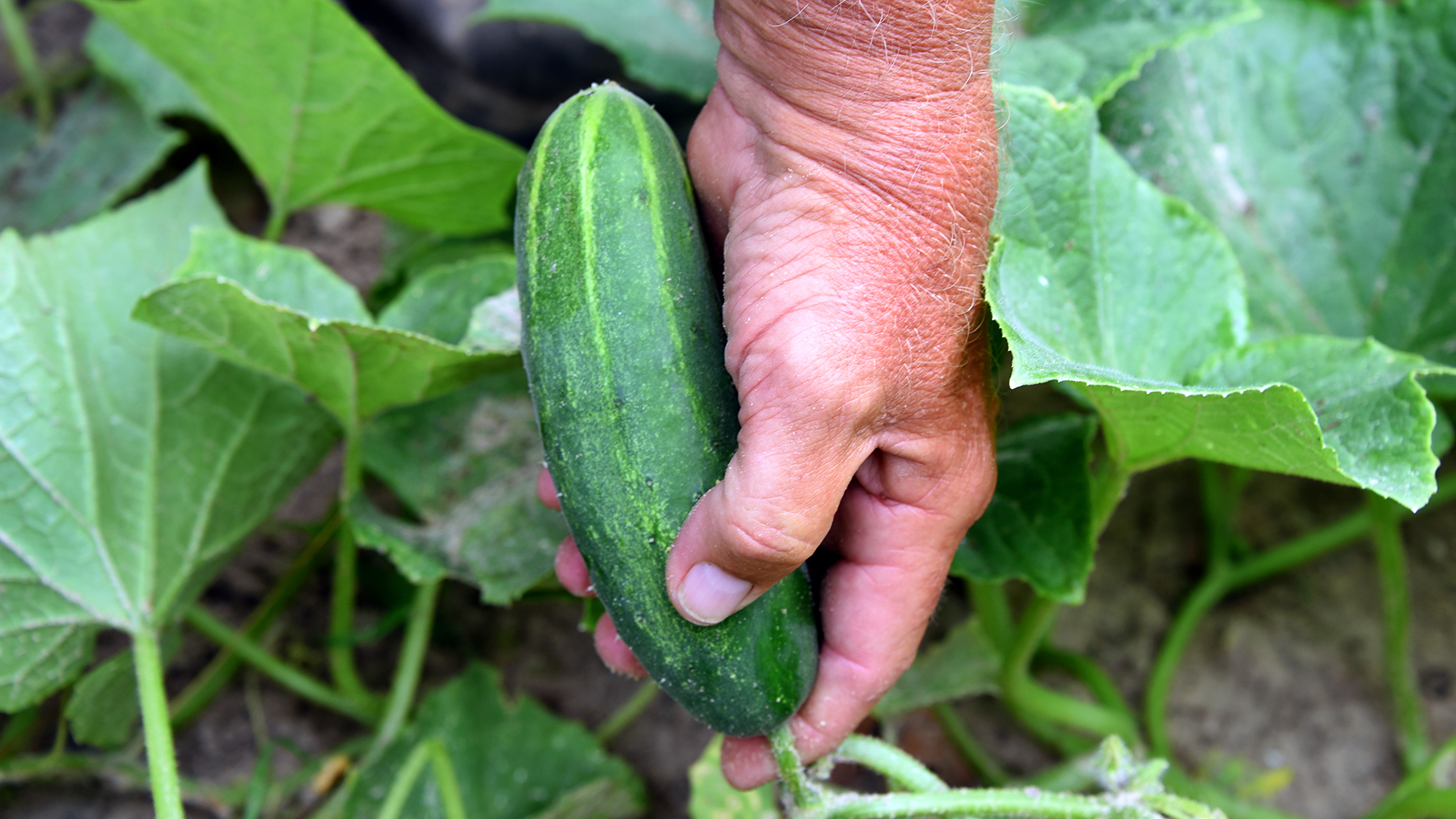
If you are a new gardener, Pilarchik suggests cucumbers are an easy crop to grow directly outside. “Place three seeds in the form of a triangle, about 1 inch apart, press them in about ½ inch deep, and cover them with soil,” he explains.
He recommends removing the smallest plant, once all three seeds have germinated, after about 5-7 days. Removing the weakest plant will give the remaining two the best chance of strong, healthy growth.
“Cucumbers can be left to sprawl on the ground, or you can plant them next to a trellis and grow them vertically,” he adds.” Vertical growing saves spaces and helps you manage pests and diseases more easily.” It’s also ideal if you have a small garden.
However, if you'd prefer not to grow cucumbers direct into your soil, they are one of the vegetables you can grow in pots.
How to build a simple trellis
Pilarchik suggests making a simple trellis using two or three 6-foot wooden stakes or metal T-posts. “Place them into the ground, about 3 feet apart. Use a thicker piece of string or a clothing line to create the trellising for the cucumber plants to climb up. Tie a line of rope from post to post every 6 inches until you get to the top.”
You can continue to plant warm season crops through the summer and even in early fall.
Increase your crop
Cucumbers can often get “beat up” over the season, so rather than trying to save a plant that is “on its way out”, Pilarchik recommends planting another round of cucumbers in late June or early July. “The new plants will quickly mature, and you can continue harvesting over the summer.” If you are lucky and have a long growing season, they can also be planted again in mid-August.”
3. Basil
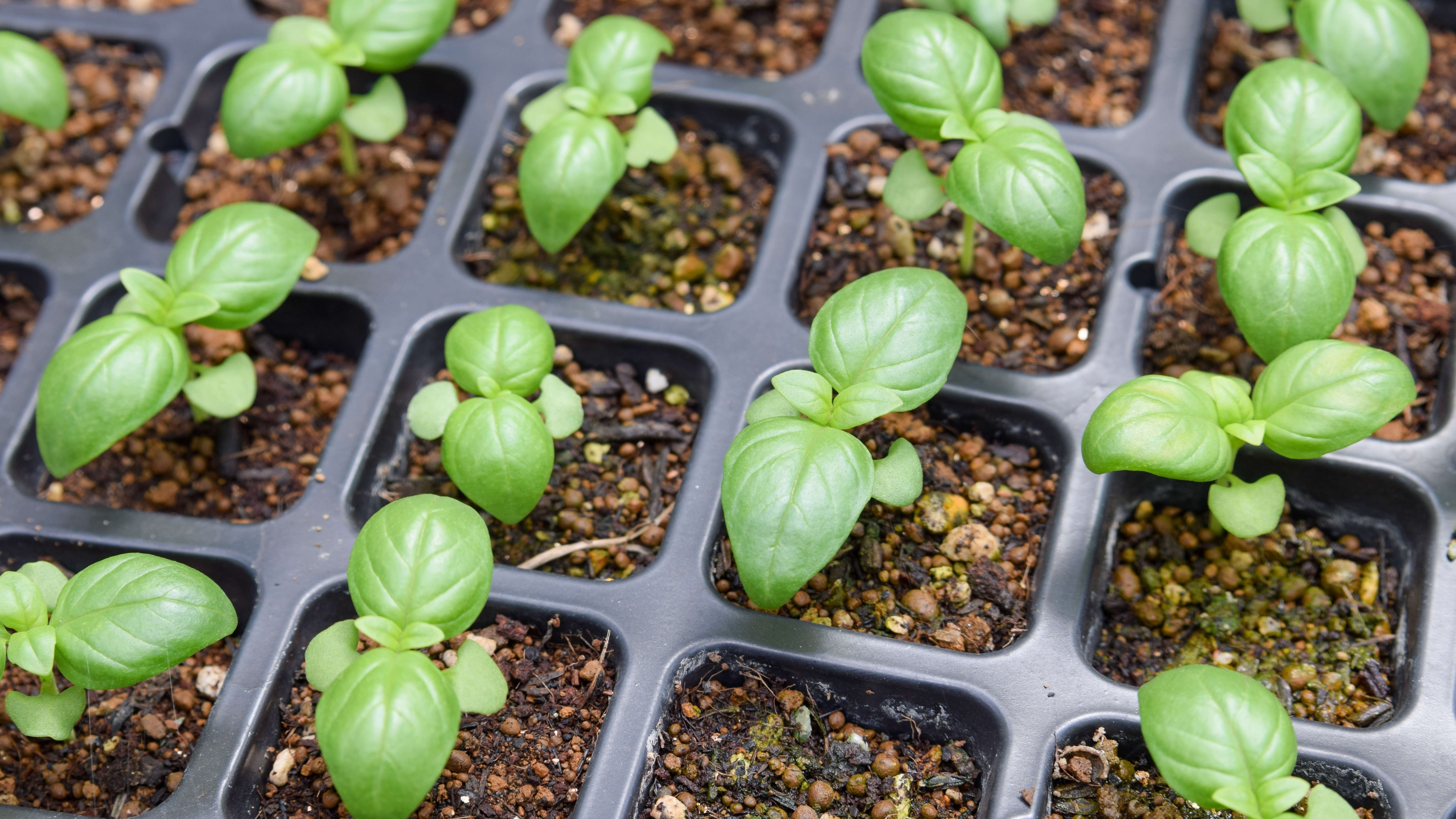
Basil is one of my favorite plants. It has a wonderful aromatic scent and is my go-to herb to add to recipes; it’s particularly great paired with tomatoes. Pilarchik agrees, and since it is expensive to buy in grocery stores, he suggests it’s an ideal herb to grow at home. You can pick up a packet of 100 seeds for $2.
There’s also plenty of choice, “You can also find purple basil, lemon basil, lime basil, cinnamon basil, and Thai basil, “ says Pilarchik.
If planting basil directly outside, you’ll need to wait until the soil has reached a consistent temperature of 50°F. Basil will also thrive in a sunny position, gaining 6 to 8 hours of full sun daily.
Plant a new basil round every 6 weeks to ensure you have an endless summer supply. When you see flowers on the basil, remove them. This will help to ensure continued leaf growth.
What’s more, “Basil doesn’t need a planting hole like other crops,” says Pilarchik, “Just loosen the soil to about 4 inches and plant 3 seeds about ¼ inch deep.”
He also suggests spacing the grouping of 3 seeds every 10-12 inches based on how many clusters of plants you want to grow.”
Pilarchik says you can expect basil to take 10-14 days to germinate, then once they have developed 2 to 3 pairs of true leaves, they can be transplanted.
Water the seeds every other day for 2 weeks to help establish the plants, and add a mulch to retain the moisture and suppress weeds.
When to harvest
You can start harvesting basil once the plants are 6 to 8 inches tall. Picking the leaves regularly will help keep the plant growing.
4. Tomatoes
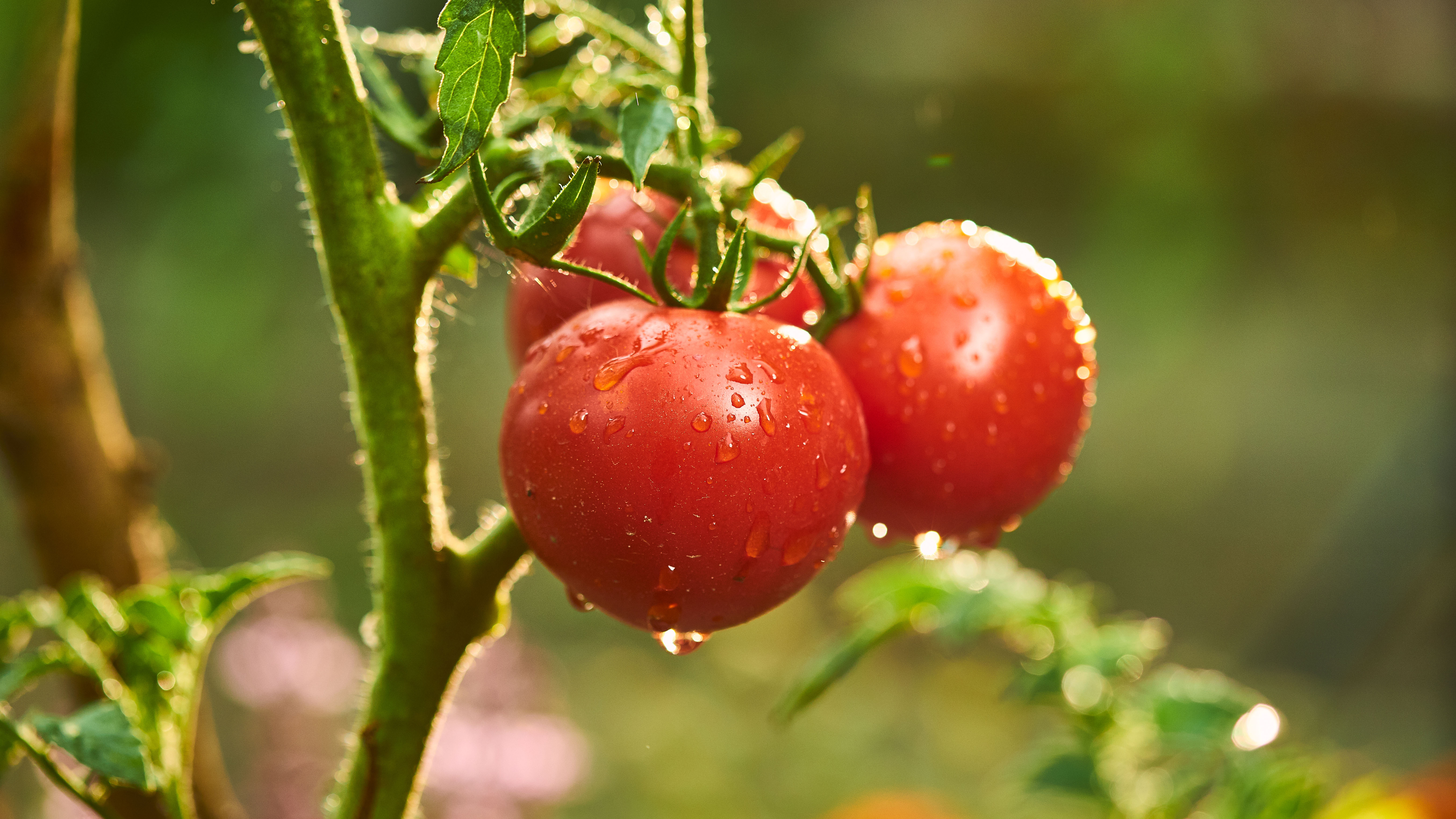
Nothing beats a homegrown tomato, and Hyland agrees. “Tomatoes are my absolute favorite, not just for those dipping their toes into gardening, but for pros as well.”
But is it best to grow tomatoes from seeds or plant seedlings? While Hyland says seedlings can “really give you a leap into the season”, Pilarchik says it can limit your choice of varieties you grow. This may not be a problem if you are new to growing your own, but if you are more experienced, you’ll probably want to experiment with different types.
“Cherry tomatoes can be easily grown from direct seeding,” says Pilarchik. “Place three seeds 2 inches apart across the planting hole, press them in ½ inch deep, and cover. They will germinate in 7-10 days.
“Cherry tomatoes are fast growers and very prolific. After about one week of growth, keep only the strongest plant.”
“Planting multiple seeds helps ensure you get a germinating plant. Planting one seed may seem frugal, but if it doesn’t germinate, you are out of luck and time is wasted,” advises Pilarchik.
Tomatoes love the sun
Tomatoes will do best in a sunny position. “Whether you’re working with container gardens or traditional beds, give your tomatoes a spot bathing in sunlight and make sure they receive plenty of water,” advises Hyland. “A little trick I’ve learned is to water them early in the day to reduce water loss and keep diseases at bay.”
Knowing how often you should water tomato plants to avoid them being under or overwatered depends on whether they are seedlings or mature plants. The environmental conditions will also make an impact.
Stake your tomatoes
Apart from the sun and plenty of water, tomatoes benefit from being staked to help support them as they grow upwards, and not doing so is one of the mistakes to avoid when growing tomatoes. Pilarchik suggests placing a 6-8-foot post next to the seeds when sowing. Once the main vine starts to grow, it can be tied loosely to the post at 6-inch intervals.
Give them space
Another consideration when growing tomatoes is to give them plenty of room to grow. “Space your tomato plants 3-4 feet apart if you want to grow more than one plant,” says Pilarchik. “It is important to have spacing between them to allow for good airflow to help manage disease issues. You can do this for any tomato plant that matures in about 90 days."
5. Zucchini
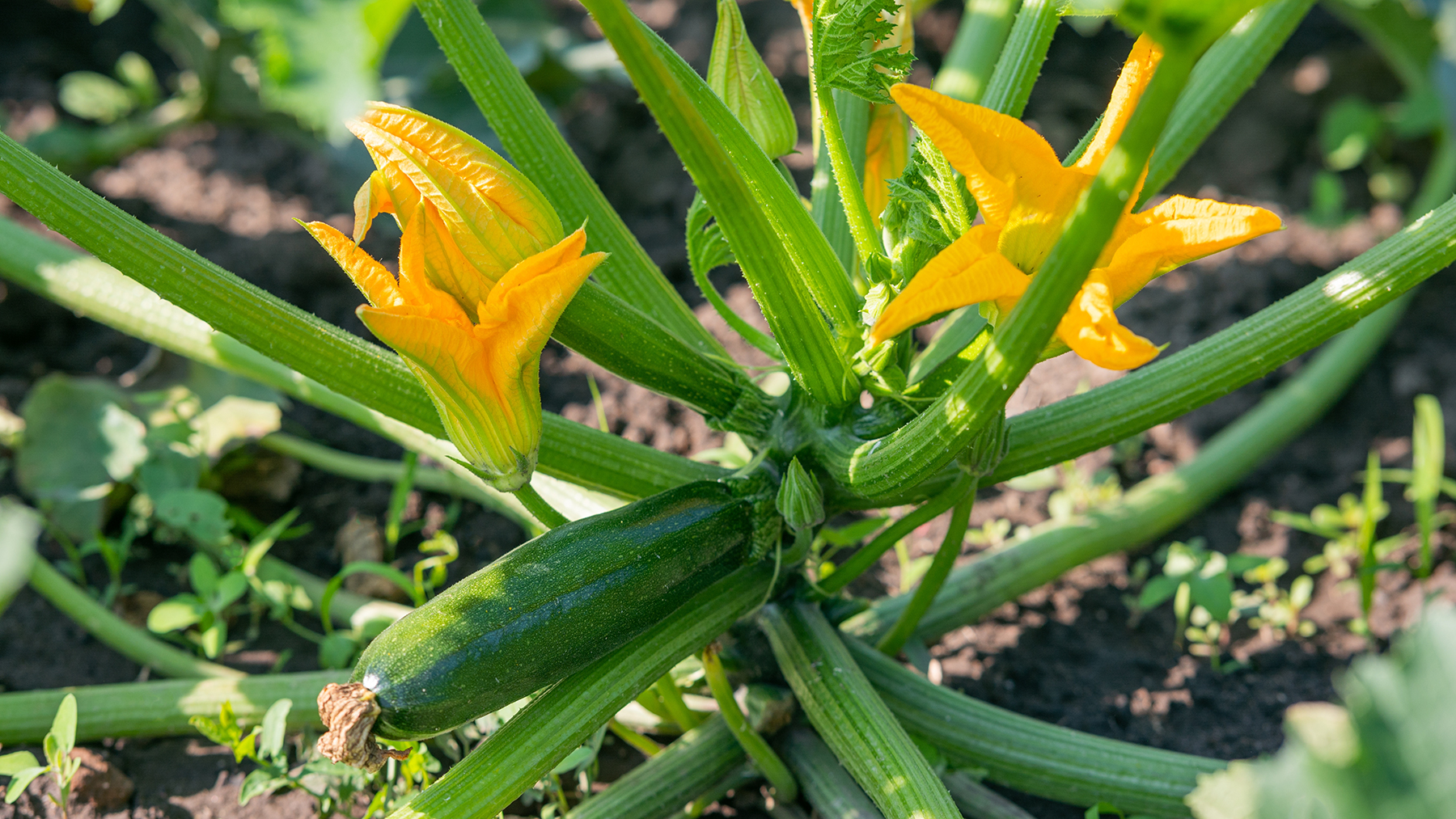
Just like tomatoes, zucchini is another warm-soil-loving crop, which Pilarchik says performs best when grown from seed. I started my own seeds indoors in mid-April and they are now almost ready to harden off before planting outside. However, Pilarchik recommends planting them directly into the soil, placing two seeds 1 inch deep and 3 inches apart.
You can expect them to germinate within 5-7 days, then leave them to grow for seven days before removing the weakest plant. He also recommends growing one to two plants at a time. I grew four plants last year and had a bumper crop — harvesting far too many for my family of four. Although, we did enjoy plenty of zucchini risotto and zucchini bread.
Zucchini does not need trellising like some vegetables, but Pilarchik advises spacing them at least 3 feet apart as they get large and bush out.
Problems to watch out for
“Zucchini can be prone to powdery mildew and vine borers,” says Pilarchik. “One way to combat these problems is to have another location in mind for a zucchini plant. After your first plants have been growing for 4-5 weeks, plant some more seeds. By doing this succession type planting, you can often plant through the disease cycles and pest life cycles and the new plants begin to mature without worry of future damage or problems.”
What’s more, zucchini can be ready for harvest in as little as 30-45 days, once germination occurs, meaning you can plant them multiple times over the summer.
6. Peppers
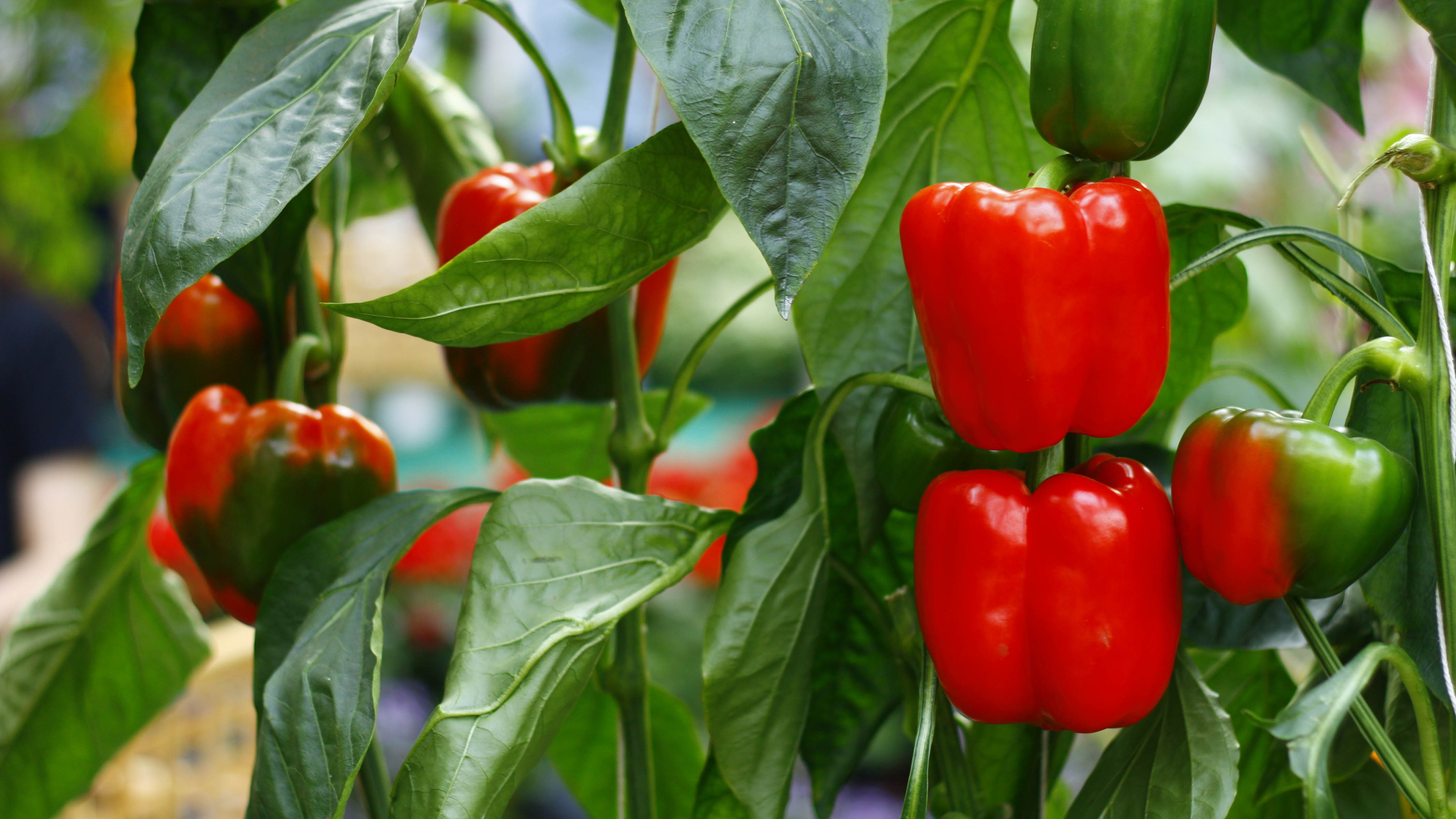
If you’re looking to add some heat to your vegetable patch, peppers are the perfect addition, “with varieties from sweet to fiery adding a kick to your yard”, says Hyland.
“I get them started indoors as little seedlings, well before the last expected frost, moving them outside when the weather agrees, “she adds. Then, they should be planted 18 to 24 inches apart in a sunny position.
However, you can sow seeds directly into your garden 10-14 days after the last frost date. Plant 4-6 pepper seeds ½ inch deep and 18 inches apart. Once the seedlings have two leaves, thin them to a single plant.
They do best in well-drained soil, so planting them in a raised bed will help if you have heavy, wet soil. Hyland also recommends laying down some mulch as this helps to retain moisture.
Keep pests at bay
Like many vegetables, peppers are prone to pest attacks, but companion planting — planting different crops together to boost crop production — can help. Hyland says basil is a good companion plant because it keeps pests at bay. It’s also beneficial to use within patio areas as it repels mosquitoes.
This raised bed planter is ideal for growing an assortment of vegetables, herbs and flowers. Measuring 70.87 inches wide, 29.92 inches deep and 31.5 inches high, the 410 litre capacity rectangular planter is made from cedar wood.
7. Beans
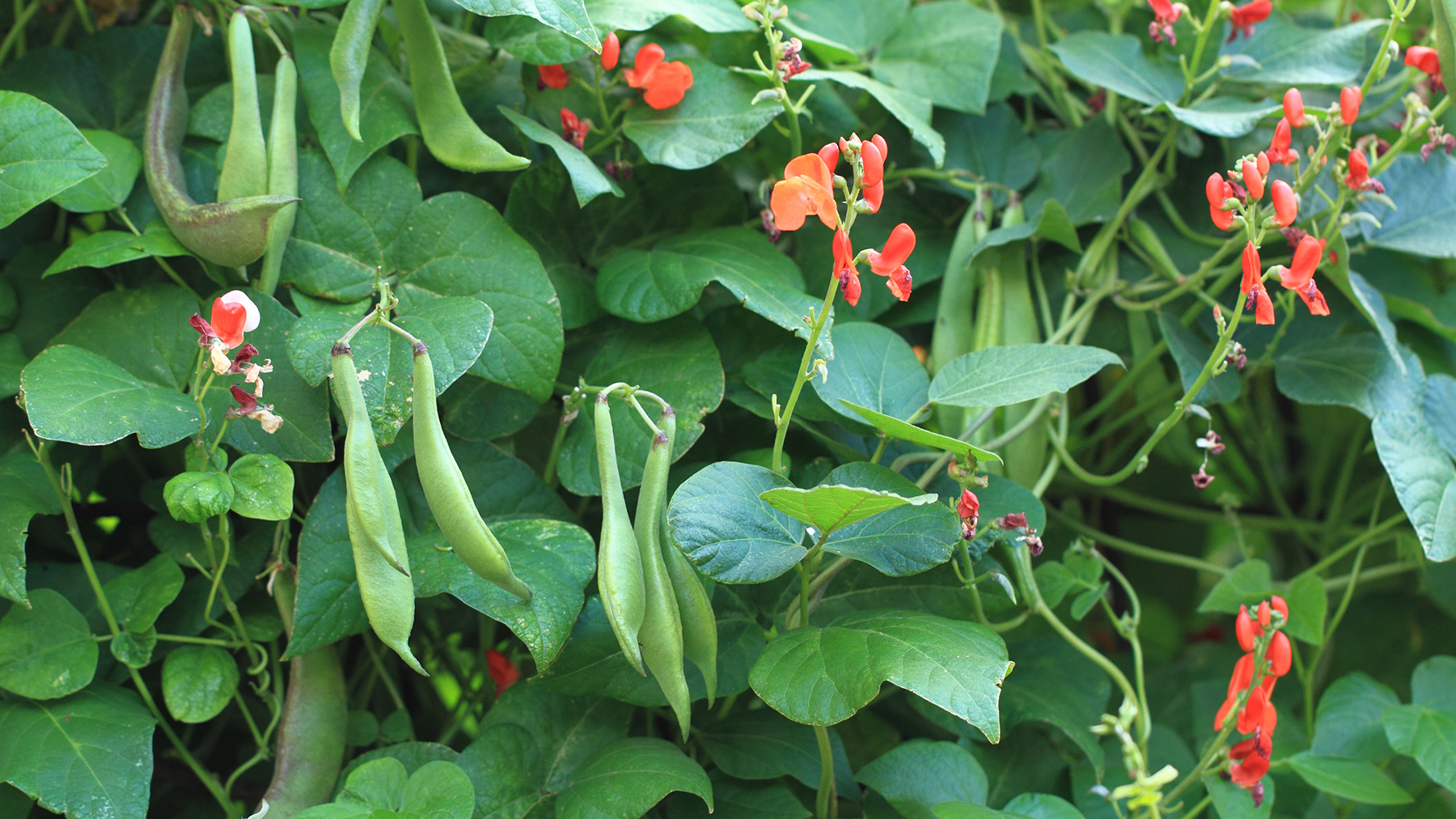
One of my fond childhood summer memories is watching my grandparents tying back their pole beans. Although I wasn’t a fan of their taste at the time, I enjoyed the sight of the fresh beans and the beautiful bright orange flowers.
Hyland is also an advocate. “Beans have earned their space in my garden year after year. Their generous produce and straightforward care make them unbeatable.
“You can go with climbing pole beans or the more compact bush types — both grow well from seeds planted directly in your garden. I enrich the earth with some organic compost beforehand.”
“My secret is keeping the soil evenly moist, especially during blooms and bean formation,” says Hyland.
Pilarchik describes pole beans as a “very prolific and nutritious vegetable” which are often overlooked. As a bonus, “they require minimal maintenance and produce extremely well,” he adds. He prefers pole beans over bush beans because they take up less space.
When planting, he recommends placing two 6-8 foot posts about 2 feet apart in the ground before adding string to the trellis in 4-inch rows. “Place three seeds at the base of the trellis about 1 inch deep and cover.” You can expect the seeds to germinate in 5-7 days, then keep the two strongest plants.
Beans can be planted every 45 days, giving you an endless crop to enjoy through the warmer months.
More from Tom's Guide
- Discover 7 best vegetables to grow indoors
- And 9 easiest vegetables to grow for beginners
- Plus, how to grow garlic in 6 simple steps

Camilla is the Homes Staff Writer and covers everything to do with homes and gardens. She has a wealth of editorial experience, mounting over 30 years, and covers news and features, tests products for reviews and compiles buying guides.
Her work has appeared in business and consumer titles, including Ideal Home, Real Homes, House Beautiful, Homebuilding & Renovation, and Kitchen & Bathroom Business. She’s even appeared on the cover of Your Home, writing about her own house renovation.
Although she’s obsessed with decorating her home, she also enjoys baking and trying out the latest kitchen appliances. But when she’s not inside, you’ll find her pottering about in her yard, tending to her vegetable patch or taking in her prized hydrangeas.
You must confirm your public display name before commenting
Please logout and then login again, you will then be prompted to enter your display name.
